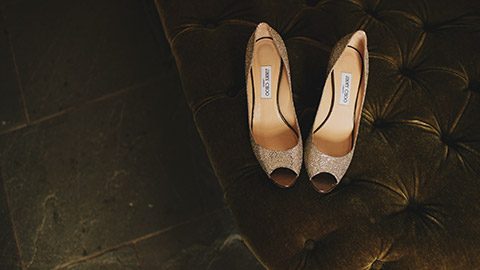How many decisions do you make throughout the day? Which pair of shoes should I put on? Where will I go for lunch?
If you think about it, we make many purchases without giving them any attention every day. These seemingly small decisions keep creative marketers awake at night. Because we can use the information, we gain from understanding the processes behind customers' decisions to increase revenue.
What is consumer behaviour
Consumer behaviour is the term used to describe the analysis of the behaviour of individuals and households who buy goods and services for personal consumption. To formulate a marketing mix that best serves our potential customers, we need to know the reasons and motivations behind consumers' decisions.
Consumers purchase products to satisfy:
- Their needs
- Their wants.
These needs and wants can vary in nature, and how consumers go about satisfying them differs as well.
For example, few consumers devote much time to choosing their next tube of toothpaste, but most consumers spend a lot of time deciding on a destination and itinerary for an overseas holiday. How consumers recognise their needs and wants, find out about how to satisfy them, choose among the options, and think and feel about their decision are subject to numerous influences.Greg Elliott, Sharyn Rundle-Thiele, David Waller, Sandy Smith, Liz Eades, Ingo Bentrott.Marketing
Influences on consumer behaviour

Have you ever wondered why your choice of a product or service differs from that of a friend or family member?
Perhaps you love a pair of Jimmy Choo’s shoes, whilst your friend prefers the shoes she bought at a nearby store. What factors influence her decisions, and how do they differ from yours?
These are the characteristics that marketers focus on when determining who their target customers are, whether they shop every day or only once in a while, and research what they want to buy or buy on the spur of the moment. Five key aspects influence consumer behaviour when purchasing a product.
These factors are:
- Psychological: motivation, perception, learning, attitudes and beliefs
- Social: family, reference groups, roles and status
- Cultural: culture, subculture and social class
- Personal: age, income, occupation, lifestyle
- Economic: personal income, family income, income expectations, consumer credit, liquid assets, savings
Psychological factors
Consumer behaviour is heavily influenced by human psychology. These influences are difficult to quantify, but they have enough clout to affect a purchase choice.
- Motivation: A person’s buying behaviour is influenced when he is motivated enough. A consumer's basic and security needs can inspire them to purchase goods and services.
- Perception:When we receive information about a product and analyse it to create a suitable image, our perception is influenced. When looking at an ad, we form an idea or images about the product, that perception plays an integral role in the decision-making process to buy the product.
- Learning: A person gets to learn more about a product when they buy it. Learning comes over time through experience. Skills and knowledge are the cornerstones of consumers learning.
- Attitudes and beliefs: When developing a product's brand image, attitudes and beliefs are crucial. As a result, marketers work hard to understand consumer attitudes and beliefs while creating marketing efforts.

Social factors
Because we are all social beings, the people we interact with influence our purchasing decisions. We are always trying to imitate other people to blend in.
- Family: We tend to use specific items due to watching our families use them as children, and we continue to use them as adults.
- Reference groups: People in reference groups typically have a shared purchase pattern and an opinion leader who influences their purchasing decisions.
- Roles and status: The position we hold in society has an impact on us. The greater our position, the more our status influences what we buy and how much we spend.
Cultural factors
A collection of ideas and ideologies that belong to a specific community are connected with a group of people. A person’s behaviour is influenced by his culture. Some of the cultural influences are:
- Culture: The basic values, needs, wants, and behaviours that consumers observe and learn from their close family members and other important individuals are cultural factors.
- Subculture: Within a culture group, there are many subcultures. People of various religions, castes, regions, and ethnicities can form subcultures. These subcultures constitute a client segment in and of themselves.
- Social class: Income is only one component determining social class; other factors include work, family background, education, and housing. Social class can be a good indication of consumer behaviour.
Personal factors
Personal factors influence our choices. These factors can vary from person to person.
- Age: One of the most important things that influence our preferences is our age. A teenager's flamboyant purchasing decisions would differ from those of an elderly person.
- Income: Our money influences our purchase habits. Our purchasing power increases as our income rises, and vice versa.
- Occupation: Our profession significantly influences our purchasing decisions. We all tend to buy relevant or appropriate products for our work.
Economic factors
- Personal income: Our personal income is the determining factor in how much money we will spend on products and services.
- Family income: After covering all of one's essential needs, the money left over is spent on various things, branded items, pleasures and durables
- Income expectations: If we anticipate an increase in our income in the future, we will naturally spend more money on purchases.
- Consumer’s credit: Our items consumption will likely increase if we have flexible credit terms, but less flexible credit terms would have the opposite effect.
- Liquid assets: Stocks, mutual funds, savings, and current accounts are examples of assets that can be quickly changed into cash. We are more likely to spend more on luxury and shopping items when we have more liquid assets.
- Savings: Whether big or small, we make shopping decisions practically every day. We examine if a purchase will fulfil a need. All the given factors can be used as a weapon by businesses to increase their sales prospects.
Case study
A research study conducted in 2012 found the following outcomes regarding consumer behaviour in New Zealand.
Read through the following extracts and reflect if the findings are still correct for today’s consumer behaviour in New Zealand.
‘A research study about consumer behaviour in New Zealand has shown how people's buying behaviour has been affected by their income, occupation, education, geography, demographic, lifestyle, and culture on their desire to buy Hennessy Cognac.
- Income status was a big factor in whether a person will buy a high-priced product such as cognac and New Zealanders vary by their ability to purchase the product because of wealth.
- Occupation is not a great factor because people in different occupations have different payment levels.
- Education does not seem to matter much either, except that better-educated people earn more over their lifetime.
- Demographics play a role in the same way that geography does.
- Lifestyle (rich vs. poor) is probably the biggest factor anywhere. In New Zealand, there is less disparity of wealth, so it may not be as big a determent factor as other factors. Possessions speak to the wealth factor. Therefore, a person who wants to be seen as someone who is wealthy and have influence is more likely to drink high-end spirits than someone who does not have that issue.’
“Consumer Behaviour New Zealand Consumer Behaviour This” (2012, March 14) Retrieved November 10, 2021, from paperdue.com/essay/consumer-behaviour-new-zealand-consumer-behaviour-78581
The consumer decision-making process may appear mysterious, yet when making a purchase, all consumers go through the same fundamental processes to discover which items and services will best meet their needs.

Consider your thought process while purchasing something, especially if it is a large item such as a car. Before taking the jump, you think about what you need, do some research, and weigh your options. You often question if you made the correct decision afterwards. Put yourself in the customer's shoes and analyse the steps in the consumer decision-making process if you work in sales or marketing to make a bigger impact.
What is the consumer decision-making process?
The consumer decision-making process entails identifying needs, gathering information, evaluating alternatives, and finally making a purchase decision.
Consumer behaviour is impacted by external elements such as
- Social values
- Cultural values
- Economic factors
- Psychological factors.
Consumer decision-making is a complicated process that includes everything from recognising a problem to post-purchase actions. Every customer has distinct demands in their everyday life, and it is these needs that drive them to make varied choices. Let us look at the different types of consumers that a creative marketer can encounter in the workplace.
Types of consumers
Reaching the appropriate customer at the right moment is far more effective than attempting to reach a large number of people and hoping that anything sticks. According to research, there are five sorts of consumers in marketing, each of whom requires somewhat different approaches to attracting and retaining them.
What are the different types of consumers in marketing?
Knowing the different sorts of consumers for goods allows a corporation to sell the product to a potential buyer in the most effective way possible, resulting in increased sales and profits. Understanding the different types of customers that buy your products can assist you in making a variety of decisions, such as:
- Product design (including cost)
- Promotions
- Product placement
- Production schedules.
The Consumer Style Inventory is a popular tool for consumer behaviour analysts and marketers.
Quality conscious/perfectionist
- Desire search for the very best
- Tend to shop systematically, making comparisons to compare quality and value.
Brand conscious
- Tendency to buy expensive, well know designer labels
- Believe that higher prices are an indicator of quality
- Prefer top-tier retail outlets or departments stores
- Show an awareness of the brand
- Consumers are very concerned about the brand's name and products.

Recreational/hedonistic
- The consumer is engaged in the buying process
- Shopping itself is a form of enjoyment.
Price conscious
- The consumer is price and value-conscious
- The consumer shops around carefully seeking lower prices, sales and discounts
- They are motivated by getting the best values for money.
Novelty/fashion conscious
- Consumer tends to seek out new products for the new experience and sake of excitement
- Wishes to keep up to date with fashion and trends
- This is also linked with variety-seeking.
Impulsive
- Impulsive buyers are somewhat careless in making purchases
- Buy on the spur of the moment
- Not concerned with costs or obtaining value
- They are not overly engaged with the object either cognitively or emotionally.
Confused (by over choice)
- The consumer is confused by too many options to choose from or too much information in the market.
Habitual/brand loyal
- The consumer tends to follow a routine purchasing pattern each time they buy
- They have favourite brands or stores and have formed habits in their choosing
- They do not tend to do much evaluation or shopping around.
What sort of buyer do you think you normally are?
Our role as creative marketers is to influence people's behaviour. We spend all of our time wondering how to persuade others, such as enhancing their willingness to buy something, persuading them to try out new products, or encouraging them to continue using products. We consider all of the "whys" a potential consumer might be interested in our product and work to improve and maximise these in every manner we can.

Many consumers have changed their behaviours as a result of their new experiences. Their ideas about a wide range of everyday activities, from grocery shopping to exercising to socialising, have shifted due to new experiences. Even long-held views can shift when consumers are shocked and delighted by new experiences, making them more ready to repeat the action even when the trigger is no longer present.
“Fuelling volumes for local retailers is the number of people shopping online. In October 2021, 1.5 million Kiwis shopped online, up 24% on the previous year, representing over 300,000 more online shoppers. Not surprisingly, online shoppers are also buying more often. In October, the average online shopper made 4.6 online transactions (up from 3.2 a year ago). This means that, on average, shoppers are buying something online every week.” (NZ post, 2021)
Product innovation can help companies move customers towards new habits. Over the last few years, consumers have become more health-conscious and boosted their vitamin and mineral intake. Unilever claimed an increase in zinc and vitamin C-containing beverages, such as Lipton Immune Support tea. As a result, the company is launching similar products worldwide. It is also aligning its innovation efforts with rising health-and-wellness concerns among consumers.
On the flip side, product innovation can also be negatively perceived by customers, have a look at the following video on how consumers have reacted towards reinvented Cadbury products.
Task
More and more vehicle manufacturers are planning on selling electric cars. Research the factors that will influence consumer decision making in this market. Describe the type of consumer interested in this type of product.
Share your findings on the forum with your peers.

